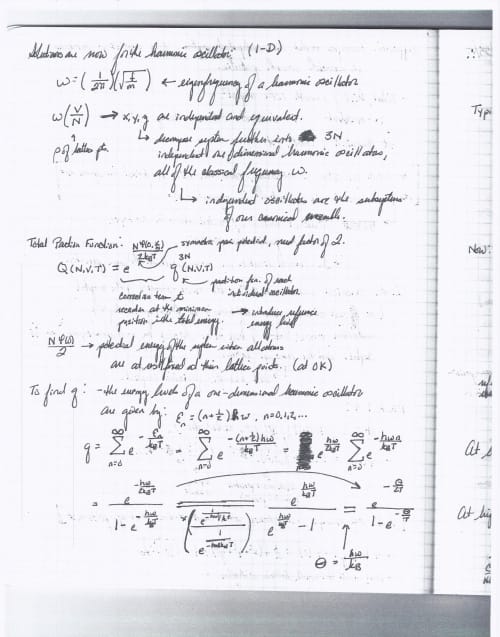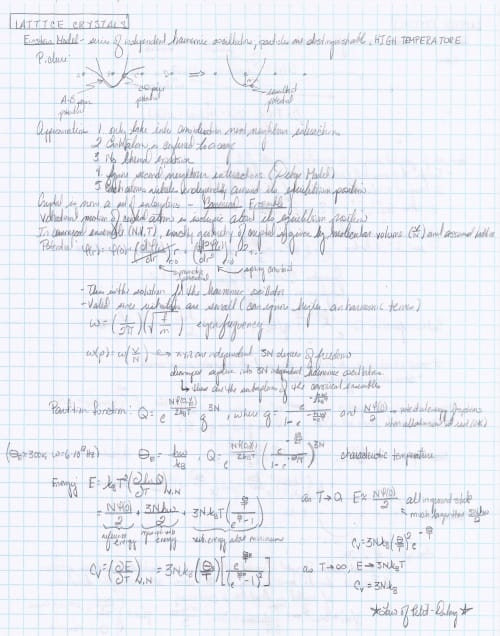It is a perennial lamentation of many people that have stepped foot into a chemistry, physics, or math classroom. It doesn’t matter if it is an adult many years out of school, who’s first response to hearing about science or math is how much they did not get much of what was going on, or a current student who echoes that same sentiment. They all say similar things, that they sit in class, and the teacher might as well speak an actual foreign language, because they just barely have a clue as to what is going on. Unfortunately, this has the side effect of people abhorring science or math, incorrectly identifying a poor classroom experience with an authentic dislike for the subject or, worse, an actual belief that they are not, “Any good at it.” I combat this logical fallacy on a daily basis.
There are several contributors to a student’s lack of understanding. Some of it we cannot control directly, such as when teacher’s teaching style does not align well to our learning style.
However, we can control what we do, and not just during class, but before and after.
Here are five suggestions, in chronological order, that I think, if followed for each class, is going to make your classroom experience much more enjoyable, a better chance to appreciate the topics, and get your scores to increase, even significantly!
- Read the textbook. The goal here is three-fold. We want to get as much useful exposure to the subject matter before class, so that we have more opportunities to benefit from the class. Our second goal is to have developed a succinct set of notes that can be reviewed prior to, and used during, the class. Finally, by working with the material ahead of time, we can have a set of questions prepared that either we can listen for the answers to, or ask if they remain unresolved.
- Take good notes. I emphasize the word good here. A usual scenario for my students is that they will try to understand what is going on in their class, give up, and then write down everything that is said, written on a board, or shown as a slide. It really turns into an unorganized jumble of words and equations that when they review at their notes, they neither can tell me what actually happened in class, nor can they study from them. You don’t need to write everything down. You should be an active listener and participant in class, and scribing everything removes that possibility. Here is an example of notes from my notebook of an advanced chemistry class, Statistical Mechanics:

These are actual notes that I took during an advanced chemistry class
I made sure to write down the equations we were discussing, label any variables that I wouldn’t necessarily remember, show any math steps that would not be obvious when re-reading my notes, and made brief, succinct notations of important facts and descriptions. Many more words were said in class. If you are a diehard and must have those words, I’d recommend a device like a Livescribe Pen, so that your notes are clear and good, and you have recorded everything that was said at the time you took a particular note. - Be an active participant. Please don’t check out. Try to solve problems alongside your teacher. Answer a question or two in class, or even volunteer to go to the board, whatever you are comfortable with. Push yourself to be an active participant, as it helps expose and clear up any misconceptions, reinforces good skills and knowledge that you have, and shows your teacher that you are engaged and working hard!
- Reread and Rewrite. STEM courses are cumulative. What was said yesterday will be used tomorrow. You will be expected to recall, understand, and apply that which has already been taught. Since you already have good notes from class, and notes from your previous reading, both succinct, read them over! I even make a second copy that I later use for exam prep, and simulate teaching myself of the material to see any gaps in my understanding. Here is an example of those same notes from class, rewritten (starting half way down the page):

After my lecture, I went through my notes and rewrote them, teaching myself along the way. The part that links up with the handwritten notes starts halfway down.
Much neater, and it forced me to write alongside teaching myself (remember the advantage of doing problems alongside a problem in a textbook, rather than just reading? Or useful study habits, supported by the literature?). If I found I had more questions, I would shoot a quick e-mail to my professor and ask, and I can be very specific to what I need to know! Of course, if I just did not understand something, after reading, and class, and going through my notes, I sought extra help. - Ask questions. Of course, ask questions! Don’t ever walk away from something, thinking you’ll get it next class; you may be expected to know it! You’ll have homework for sure, so ask early and often, until you understand everything that is being asked of and presented to you!
This actually appears to be more work than it is. It isn’t. It’s part of good study habits that we ought to do nearly every day. When I was a student, I think I would spend maybe fifteen to thirty minutes three or four times a week per STEM class doing this (usually less as a topic progressed because I needed to review less because of the repetition). I can tell you that I never crammed for an exam when I followed this system; I already knew nearly everything that I needed!
